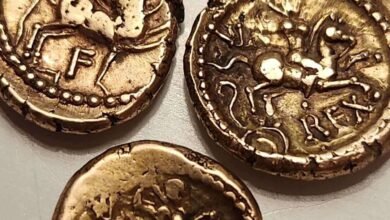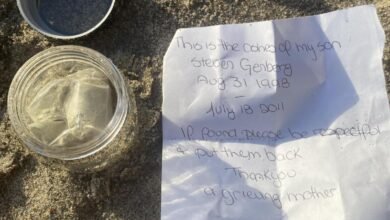A crew retrieves the Holy Grail of shipwrecks, laden with billions in lost treasure

- The Colombian government announced a plan to begin recapturing some sunken treasure from the galleon San José, which sank near Cartagena in 1708.
- Even conservative estimates suggest the ship’s loot is worth billions of dollars and has been described as the “holy grail” of naval treasures.
- Remotely controlled underwater vehicles initially take on the hard work of cleaning the ship and bringing items to the surface.
In the world of treasure-filled shipwrecks, there has been nothing in history quite like the San José – a galleon that sank off the northern coast of Colombia in 1708.
The ship, loaded with gold, silver, emeralds and other artifacts, was the target of treasure hunters for decades. The “holy grail” of shipwrecks, lost for over 300 years, has now been found, and its treasure will finally surface thanks to the efforts of the Colombian government.
The Spanish galleon San José was no match for the British navy. The ship was sunk by the British near Cartagena in 1708 while on its way home from the Americas with 200 tons of gold coins and other treasures. Only a few of the 600-man crew survived the explosion of the ship’s gunpowder depot.
The 64-gun, three-masted ship lay on the seabed for over 300 years until Colombia announced its discovery in 2015. Of course, there is a legal battle over the ship, as the U.S.-based Sea Search Armada has laid claim to it after allegedly finding the wreck of the San José in 1981, but the Colombian government has largely barred it from any treasure. This case is now before the United Nations Permanent Court of Arbitration.
The actual location of the shipwreck is being kept secret for obvious security reasons.
Conservative estimates suggest the treasure is worth billions of dollars, and the Colombian government said it would begin dragging valuables to the surface (possibly by the end of April).
“For the first time in history, a model of comprehensive public management of the archaeological site and cultural heritage, protected by regulations and public missionality, is presented,” the Colombian government wrote in a translated statement.
The government says the San Jose Galleon represents an “invaluable cultural heritage” for Colombia and will be managed as such. That includes spending more than $1 million on recovery efforts.
A remote-controlled vehicle in 2022 showed that the treasure will not be difficult to find. The ROV’s video showed gold bars and coins, cannons from the 1650s and a variety of collectibles as it plunged nearly 900 meters into the ocean.
These remote-controlled vehicles will be put back into operation. The plan calls for the underwater robot to bring items onto the galleon that are comparatively easy to access above water, allowing scientists to see how different parts of the ship (and the treasure within) react when brought to the surface.
Finally this “holy grail” is recovered.
Tim Newcomb is a journalist based in the Pacific Northwest. He covers stadiums, sneakers, gear, infrastructure and more for a variety of publications, including Popular Mechanics. Some of his favorite interviews included meetings with Roger Federer in Switzerland, Kobe Bryant in Los Angeles and Tinker Hatfield in Portland.



